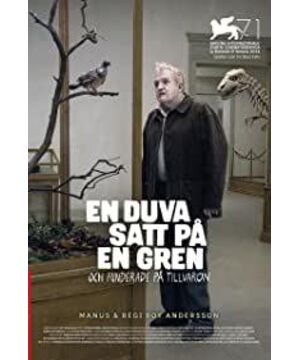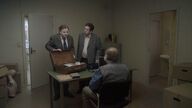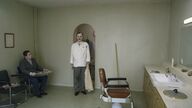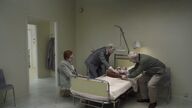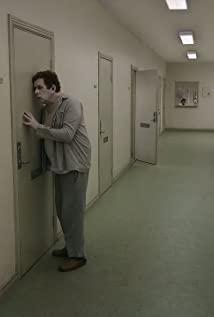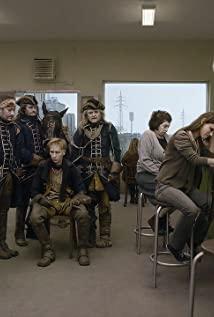"Hard Branches and Birds Quiet"
——Individual alienation in gray space
Swedish film director Roy Anderson entered the public eye with his first feature film "Swedish Love Story". Because of his second film, "The Journey of the Journey", Anderson's film road temporarily fell silent. In the following 25 years, no feature feature film was made. It was not until 2000 that he filmed "Singing from the Second Floor" and won the Jury Award at the 53rd Cannes Film Festival. After that, two films, "You Are Still Alive" and "Hard Branches Quiet" were filmed one after another. Because the above three films are closely related to daily life, they are called "Trilogy of Life".
As the final chapter of the "Trilogy of Life" and the continuation of the previous two works, "Hard Branches and Birds Quiet" is also more stylized in form of expression.
1. Stage-like performance space
The extremely simplification in the space setting of "Hard Branches and Quiet", the sculptural state of the performance of the characters, the use of deep focus and fixed lenses, are very stage-style expression styles. The film’s extreme simplification in the spatial setting increases the sense of emptiness in the space, and the separation between people is magnified in the huge space, which intensifies the sense of alienation between people. We can take a look at the layout of the "family" space in the film. Compared with the taverns, hospitals, barbershops, etc. that have appeared in the film, "family" has a more warm feeling in the traditional sense. Understanding but contradictory
In Figures 1 and 2, the overall tone of the film is mainly gray and white, and the family space under the cool tone loses its "warm" feeling. The setting of the scene in Figure 1 includes a sofa, a dining table, a man, and a woman in the kitchen. Figure 2 shows the space of the kitchen, but the kitchen has lost the “fire smoke” that it should have, leaving only the spotless table and the woman talking on the phone and the man sitting idle. The positions of the cameras in Figures 1 and 2 (the circle indicates the position of the camera) are selected to be placed on the left side of the diagonal of the space, increasing the volume of the space, the distance between the camera and the foreground person, and the distance between the foreground person and the background person The distance is maximized, creating a barrier in physical space.
The discussion of the depth-of-field lens began with Bazin. He believes that the depth-of-field lens maintains the authenticity and objectivity of the narrative. Compared with the mandatory recognition of the audience by montage, the depth-of-field lens drives the audience's thinking in a way of presentation. The depth of field lens can be seen everywhere in the film. In Figure 3, under a fixed depth-of-field lens, there are a couple kissing, a man sitting in front of the screen, a salesman entering the door, and customers sitting around the table. The characters are different and more realistically show the scene of the tavern. It is also reserved for the changes in the state of the characters after the arrival of the salesman is broken.
Characters also appear in a sculptural mode in their performances, whether it is the body movements of the characters, and the language communication shows a "slow" state. Figure 4 shows the standing crowd in the background.
2. The alienation between individuals
As a satirical humorous comedy, "Hard Branches and Sparrow Quiet", under the cold style of painting, the sense of humor has not been dispelled, but it is brought to the audience with a contrasting experience.
In Figure 4, a customer died suddenly, but the waiter was thinking about what to do if the customer's meal just ordered was not eaten. At this time, another customer raised his hand to indicate, "Can I drink his beer?" This kind of cold and humorous presentation is actually a barrier between individuals. The man in picture 1 suddenly fell to the ground due to excessive force when he was drinking red wine, while the woman was still in the kitchen and knew nothing. When talking about this scene, Anderson once said, "A man tried to open a bottle of wine and fainted. It was the absurdity of this life, this feeling of powerlessness that touched me." In Figure 2, the woman on the phone asks the man to say something. The man will only say, "I heard that they are all good, and I am also very happy." This lack of language directly expresses the sense of alienation.
In the film, two salesmen run through the whole story, promoting their products everywhere, "Vampire Teeth", "Laughing Bag", and "Uncle One Tooth Mask" (Picture 5). They hope to bring them to everyone through their products. joy. These two salesmen tried to talk to the world in the simplest way, stubborn and simple. And this kind of extremely naive toy makes it difficult to get a moment of laughter in the adult world. While this inverted arrangement creates a sense of absurdity, it also shows that the two salesmen ignore the world. Kind of powerlessness. They are like Sisyphus. After understanding the meaninglessness of life, they still stubbornly try to communicate with the world, which adds to the absurdity, nothing else.
"Hard Branches and Quiet" is very staged in form of expression, and in terms of the extremely simplified processing of space, there is the shadow of Fassbinder (such as: "Love is Colder than Death"). The film is composed of independent chapters. , Showing a "polyphony" film style. In terms of content, Anderson not only focuses on the alienation of individuals, but also uses lenses to reflect grand issues such as history, race, and religion.
View more about A Pigeon Sat on a Branch Reflecting on Existence reviews


